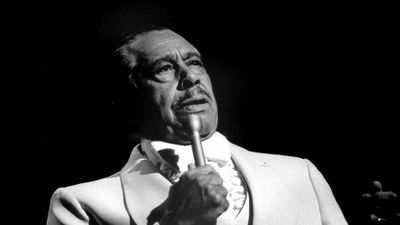Cab Calloway's Former Home Demolished Despite Calls for Preservation
Disputes over protecting the West Baltimore home have caused a rift between members of the Calloway family.
The former home of big band jazz legend, Cab Calloway, was torn down on Saturday.
According to The Baltimore Sun, the demolition took place despite calls from members of Calloway's family to preserve the West Baltimore rowhouse where the iconic singer, dancer, composer, and actor, lived in his teens. Demolition plans were originally announced in March, but were headed off by Calloway's family, local activists, and community members, hoping to convince city officials that a historic landmark designation was earned and necessary. However, city officials ruled in favor of the demolition of Calloway's old home, along with all of the even-numbered houses on the 2200 block of Druid Hill Avenue. In their place, the city intends to build a public park in dedication to the late musician and bandleader.
"I knew it was going to happen, but when you lose your foundation, it’s kind of shaky," said Peter Brooks, a grandson of Calloway who advocated for the building's preservation. He adds, "The hope was that this could be an anchor for people in the neighborhood to brag about. The significance of his work is still in play...". Brooks went on to note that he couldn't imagine the city taking similar steps with buildings significant to the respective histories of Baltimore's other notable former residents, citing Edgar Allen Poe and Babe Ruth. Other members of the Calloway family, specifically those that run his estate, sided with the city and pulled for the building's demolition, causing a rift amongst his successors.
Though it wasn't long, Calloway's tenure in Baltimore was foundational to his career. It was in Baltimore that Calloway developed as a singer and honed his chops as a performer in the city's nightclubs. After a string of gigs in musical revues that toured across the country, the Cab Calloway Orchestra was hired as the house band at Harlem's legendary Cotton Club. From there, he went on to star in films and top the jazz charts as one of the era's most influential recording artists.


